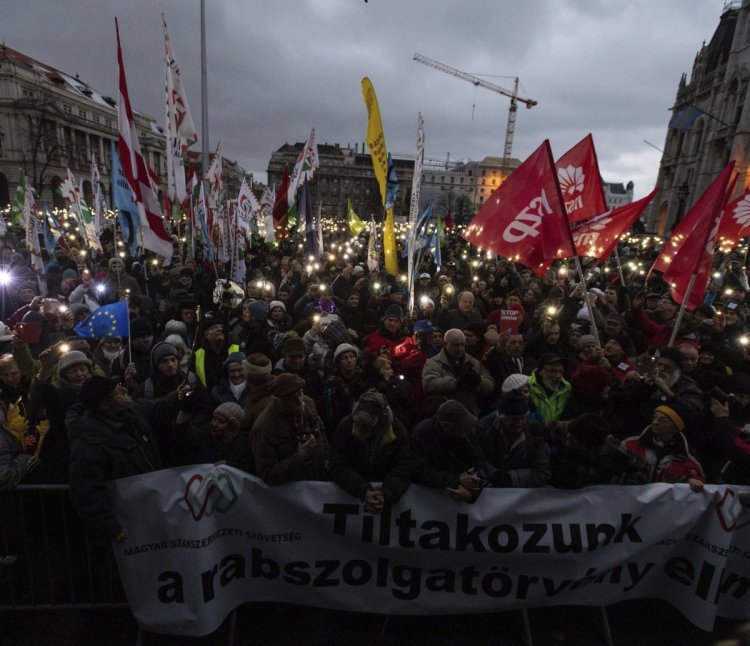BUDAPEST, Hungary — Thousands of Hungarians marched through central Budapest on Saturday, voicing anger at their right-wing government and showing that resistance remains alive in a country where it had appeared all but dead.
The protest extended into a second month – and a new year – a campaign now emerging as one of the most serious challenges yet to the authority of Viktor Orban, the four-term prime minister.
“Resign! Resign!” demonstrators chanted as a column of marchers made its way along Andrassy Avenue, the city’s grand central boulevard. By late afternoon, the crowd had filled the sprawling plaza in front of the Hungarian Parliament, near the banks of the Danube.
Orban has helped pioneer a new breed of autocracy in a country that threw off the shackles of communist authoritarianism three decades ago, and he serves as inspiration for other hard-line leaders in Europe and beyond.
His authority in Hungary is normally unquestioned. The political opposition is divided and leaderless, civil society is hemmed in by punishing laws, much of the media is in his pocket and supposedly independent branches of the government are beholden to the ruling party.
In elections last April – deemed free but not fair by independent observers – Orban won a two-thirds parliamentary majority that gives him license to change the constitution at will.
Yet Saturday’s protest offered fresh evidence that Orban may have erred with a series of recent moves that have provoked a backlash more intense and sustained than any in recent years.
“After the election, we had apathy. But then something changed,” said Bernadette Szel, an independent lawmaker who has helped spearhead the protests. “This is fake democracy and people are fed up with it.”
Among the factors driving the unrest are the eviction of Central European University, the creation of a parallel justice system that will allow the government to bypass independent courts and the dead-of-night removal of a statue that paid tribute to a hero of the failed 1956 anti-Soviet uprising.
But the most important trigger for the demonstrations was legislation, jammed through the parliament last month with little debate, that allows employers to force workers to perform as many as 400 additional hours of overtime per year. Employers can delay payments for up to three years.
The new workplace code, dubbed “the slave law” by opponents, was the government’s response to an ultratight labor market that has left employers struggling to find workers.
Orban has been highly successful in attracting major European firms to Hungary, using low wages to cement the country’s reputation as the continent’s factory floor.
But hundreds of thousands of people have abandoned Hungary, seeking higher pay and greater freedoms elsewhere. The workers left behind are increasingly chafing under the strain.
“The workers are already exhausted by the amount of work they’re doing. The new law makes it even worse,” said Bela Balogh, president of the Hungarian Metalworkers Federation.
Balogh’s union was among a number of workers’ groups out in force Saturday. The unions have threatened more protests, as well as strikes, in the weeks to come.
Copy the Story LinkSend questions/comments to the editors.



Success. Please wait for the page to reload. If the page does not reload within 5 seconds, please refresh the page.
Enter your email and password to access comments.
Hi, to comment on stories you must . This profile is in addition to your subscription and website login.
Already have a commenting profile? .
Invalid username/password.
Please check your email to confirm and complete your registration.
Only subscribers are eligible to post comments. Please subscribe or login first for digital access. Here’s why.
Use the form below to reset your password. When you've submitted your account email, we will send an email with a reset code.